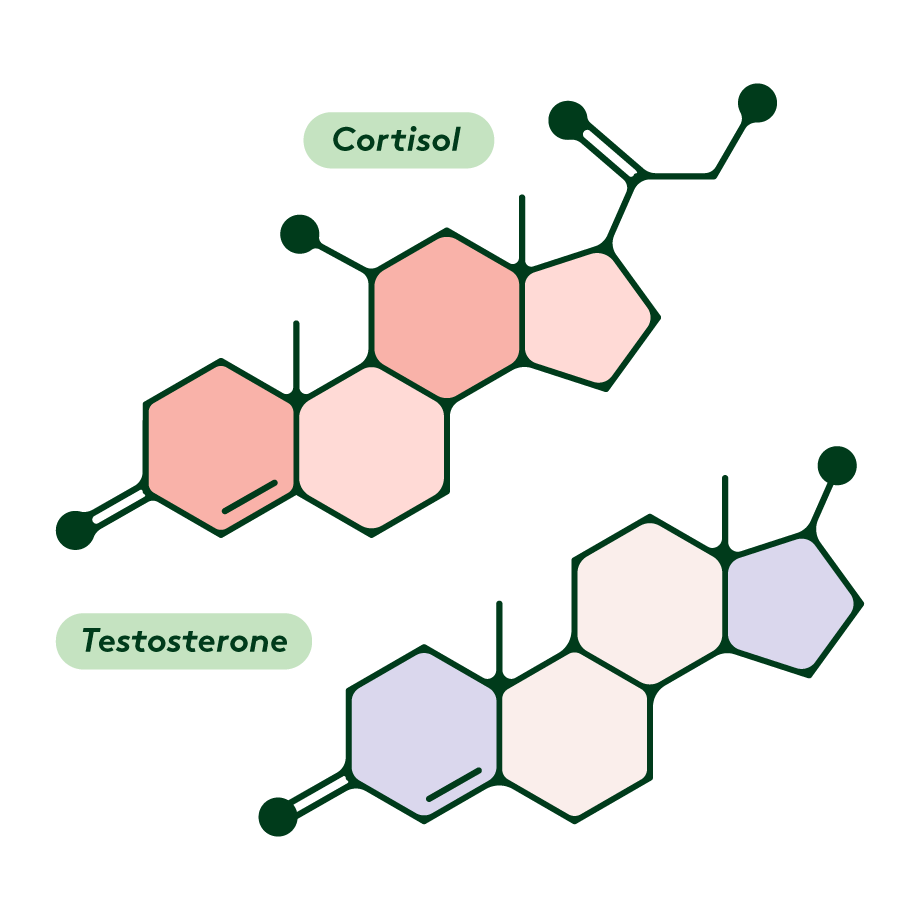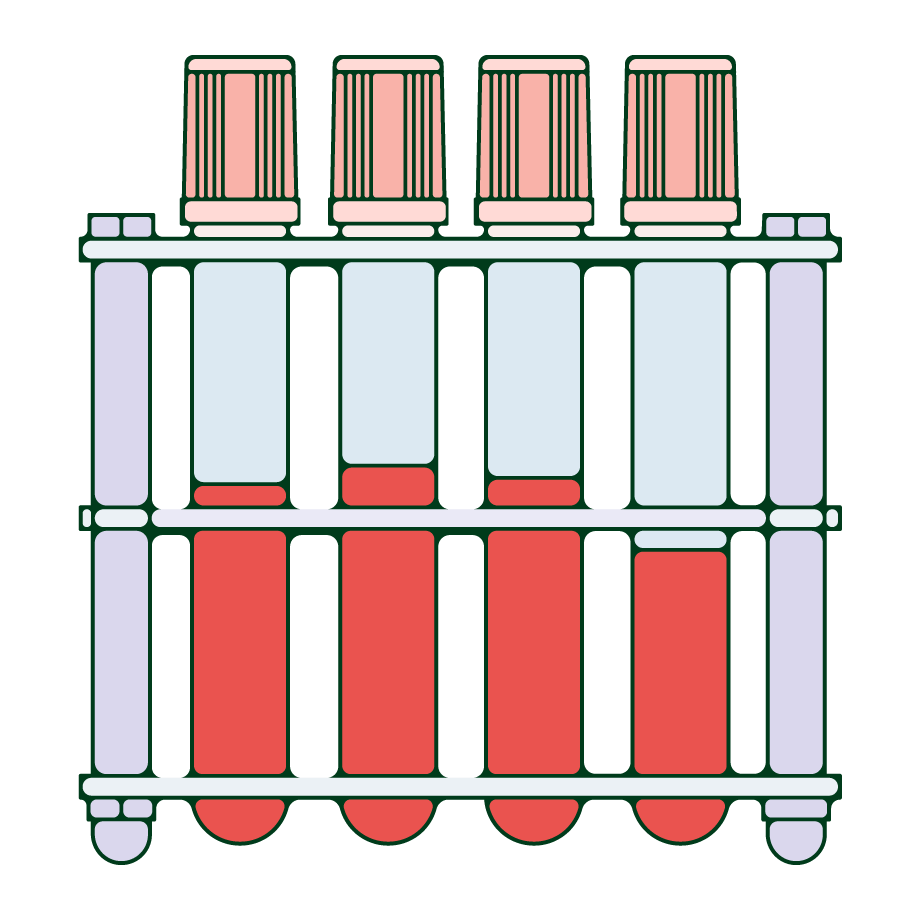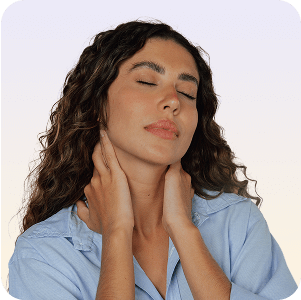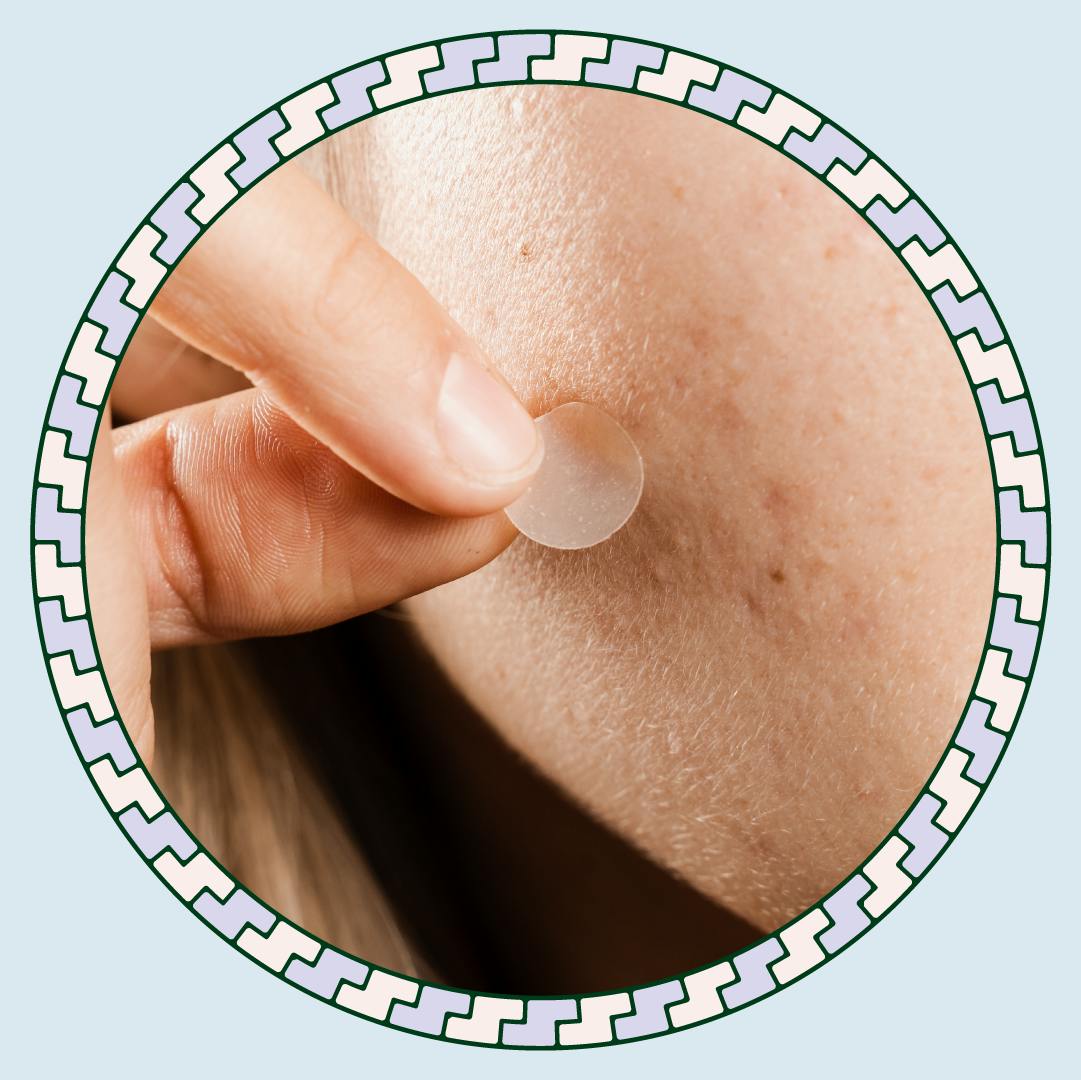Table of contents
1. Understanding hormonal acne
2. Can women even get testosterone acne?
3. What’s cortisol acne?
4. NHS first-line treatments vs Daye’s personalised approach
5. Call it a Day(e) on testosterone and cortisol acne
6. Using the Free Androgen Index to diagnose cystic jawline acne
7. Top dietary tips for kicking acne into touch
8. Verdict?
Written by Etienne Paddy
Medically reviewed by Sarah Montagu (RN DFSRH, BSc)
Illustrated by Valko Slavov
Where skincare is concerned, tell us something worse than waking up to acne— we’ll wait.
Aside from being an eyesore and, well, sore, those pesky pimples are also often difficult to manage. If you’ve been through all the recommended lotions and potions with barely anything to show for it except a dwindling bank balance and an overstuffed bathroom cabinet, we’ve got something to say that you may or may not be pleased to hear: You’re probably not addressing the problem.
Because acne isn’t just skin deep.
Topical treatments like lotions and creams can help treat the symptoms of your flare-ups, but for a true sunbeam-and-choir-of-angels breakthrough, you’ll need to single out the cause. Our bet? Hormones.
Understanding hormonal acne
How does your acne appear? Painful cystic breakouts around the jawline, chin and lower cheeks? Seems to happen quite frequently and not just before your PMS period? If so, this specific presentation of acne in women is often linked to elevated levels of two hormones.
Drumroll please: You’re likely dealing with either testosterone acne or cortisol acne.
Can women even get testosterone acne?
We know what you’re thinking— testosterone is more commonly associated with men, but research suggests that this hormone plays a significant role in female acne.
Conditions such as polycystic ovary syndrome (PCOS) and natural hormone shifts, in addition to other factors, can cause your testosterone levels to rise and this can lead to the overproduction of skin oil, called sebum.
Ever rubbed your face and come away with shiny fingers? You’ve got sebum to thank for that.
That sebum can clog your pores and then promote the growth of bacteria, nudging you further and further away from the fresh face of your dreams and right into the territory of cystic acne.
Cystic acne, the mother of all blemish bouts, tends to be deeper, angrier and— the cherry on top, literally— more painful, typically scattering along your jawline or chin like the hellish hormonal Himalayas of your nightmares.

What’s cortisol acne?
Cortisol, the stress hormone, is another major contributor to jawline acne.
A study by Shadi Zari from the University of Jeddah and Dana Alrahmani from King Abdulaziz University found that higher stress levels were strongly linked to more severe acne�—a connection that was statistically significant.
In simple terms: stress makes your acne worse. This is because high cortisol levels can trigger inflammation and increase sebum production, making you more prone to breakouts.
So, if you were stressing over that work presentation and woke up with angry cystic acne, this could be the reason why.

NHS first-line treatments vs Daye’s personalised approach
Patients seeking help managing acne often turn to the NHS, where first-line remedies include topical treatments such as benzoyl peroxide, adapalene and tretinoin or a class of antibiotics called tetracyclines.
The intent behind many of these treatments is to reduce inflammation and kill the bacteria that cause acne.
Now, while this can be effective in tackling acne in the short term, it often doesn’t address the root cause. And certainly where antibiotics are concerned, there can be some downsides to take into account, too, including:
- Antibiotic resistance
If you take antibiotics over a long period of time, you run the risk of your body becoming resistant to the medication, which can make it harder to treat future infections. Not ideal.
- Gut health issues
Antibiotics can unsettle the balance of good bacteria in your gut microbiome, which can lead to issues such as bloating, constipation or diarrhoea. That being said, probiotics like our ProViotics can help restore the good bacteria in your gut, which in turn may improve digestion and immune function while the antibiotics treat your acne. Something to consider?
- Yeast infections
Antibiotics can also disrupt your vaginal microbiome, which can lead to yeast infections, especially in women. ‘Eugh’, right? Who wants to roll the dice on a yeast infection or throw a funny tummy into the mix? As if acne wasn’t bad enough!
Fundamentally, every body is unique, and what works for one person may not work for another. You only need to poke your head into any online skincare forum to see that.
Acne is personal—and that’s where we come in, offering a personal approach without the downsides.
Call it a Day(e) on testosterone and cortisol acne
We’re not huge fans of guesswork and we’ll bet you’re not either. Luckily, you can do a little digging to gain a clearer picture of the origins of your less-than-clear skin.
And the best bit? You don’t even need to leave your house to play Sherlock. We’ve introduced a pain-free, non-invasive upper-arm device that allows you to test your hormone levels right from your very own home.
This at-home hormone screening can help you understand the precise hormonal imbalances that are affecting your skin, with a hormone panel that measures key markers, including:
- FSH (Follicle Stimulating Hormone)
- LH (Luteinizing Hormone)
- Oestradiol
- Testosterone
- Free Androgen Index (FAI)
- Prolactin
- SHBG (Sex Hormone Binding Globulin)
- TSH (Thyroid-Stimulating Hormone)
- FT4 (Free Thyroxine)
- + Additional markers for comprehensive health insights
With no needles and no spills, you can now easily— and conveniently!— get to the bottom of those blemishes. Beyond just sharing your lab results, we’ll also tell you about personalised changes you can introduce to your nutrition and stress-management routine to help achieve your optimal hormonal balance.

Using the Free Androgen Index to diagnose cystic jawline acne
One of the markers we measure for you is the Free Androgen Index (FAI) and this can actually be a very useful tool in determining the cause of your jawline acne.
The FAI is a ratio that reflects the amount of active testosterone in your system (remember how testosterone can trigger excess sebum production, leading to clogged pores and then, ultimately, a cluster of unpleasant surprises?)
While this is not commonly used as a first-line diagnostic tool for acne, testing you for high androgen levels via the FAI can help pinpoint whether testosterone is the cause of those pimples.
And here’s where it gets exciting: Understanding whether testosterone plays a role in your acne can help you decide on more targeted treatments. You know… treatments that might actually work, long-term. (!)

Top dietary tips for kicking acne into touch
Ok, but you’ve got spots now. What about short-term advice?
We hear you and we’ve got some pointers to get your pimples under control for the time being.
With acne, it’s easy to go straight for creams when you’re trying to quickly douse a flare-up. However, your skin and your gut are inherently interlinked, so often it can be just as effective to look at what you’re putting in your body, and not just on it, even for hormonal acne.
If you opt for our hormone screening we can recommend more specific adjustments, but many people report some success with the following:
- Spearmint tea
Recent research has shown that drinking spearmint tea twice a day “significantly reduced” testosterone which may help reduce hormonal-related acne. Pop the kettle on for your health, ey?
- Zinc
Zinc helps reduce inflammation, regulate hormone production and support the immune system— all of which are really great for clearing up skin. Consider adding zinc supplementation into your daily routine to reap some of these benefits.
- Anti-inflammatory foods
A diet rich in anti-inflammatory foods such as fruits, vegetables, omega fatty acids and whole grains can help to reduce overall inflammation in the body and may lead to clearer skin. Foods like salmon, berries, leafy greens, and nuts are great choices to add to your diet to support your skin health.
- Limit dairy and refined sugars
We know, this is probably the last thing you want to hear. Researchers suggest there may be a potential association between acne and diets high in dairy products and refined sugars, so avoiding these foods may help reduce breakouts.
- Time your shaves wisely
We don’t recommend shaving while you have active acne, but during periods when your skin is clear, removing your facial hair can be beneficial. It helps keep bacteria and sebum in check, which can aid in preventing pimples.
Verdict?
When it comes to hormonal acne, especially cystic acne around the jawline, it’s worth looking beyond just topical treatments. While some creams and antibiotics might bring short-term relief, they don’t address the hormonal imbalances that are likely behind those painful pimples.
Our hormone test offers a convenient, pain-free, and highly accurate way to identify and manage these imbalances and find a sustainable solution for achieving clearer, healthier skin.
Mentioned Products







